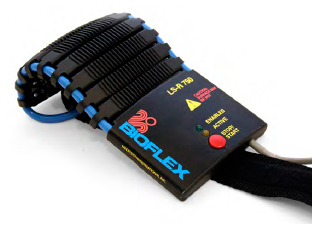PATIENT INFORMATION
LOW INTENSITY LASER THERAPY:
What is Laser Therapy?
Laser Therapy uses superluminous and laser diodes to irradiate tissue afflicted by a disease process. When the appropriate light source is placed on the dermis, photons which are particles of energy, penetrate multiple layers of tissue and are absorbed by a variety of intracellular molecules; this initiates a cascade of positive physiological responses, resulting in the restoration of normal cell morphology and function.
Laser Therapy has been successfully utilized to treat a broad range of medical problems relating to the musculoskeletal system, arthritis, sports injuries, dermal ulcers and dermatological conditions.
Unlike many modalities and pharmacological solutions which only modulate symptoms or mask the perception of pain, Laser Therapy is directed to treat the underlying condition, curing the problem and thereby its attendant symptoms.
The Advantages of LILT

Therapeutic Process
Our objectives with regard to patients are to permit them to be completely functional, pain-free and independent of pharmaceuticals.
The therapeutic process involves clinical evaluation and whenever possible the establishment of a correct diagnosis, followed by the initiation of Laser Therapy, periodic clinical re-assessment and the appropriate adjustment of protocols according to the clinical response. While undergoing treatment patients are encouraged to discuss any concerns with the medical staff as required.
Our collaborative efforts are focused to achieve the optimal clinical outcome with regard to any condition being treated. Despite best efforts, in medicine, there is never a guarantee of a completely successful outcome, however in a small number of cases this can occur. At the same time, utilizing our clinical approach along with the customization of treatment protocols as indicated, we are able to achieve more than satisfactory clinical results in over 90% of all patients treated.
MEDICAL APPLICATIONS
The healing potential of LILT extends to a wide range of medical conditions and provides a treatment alternative for patients who have not responded to other therapies. Some of the problems most effectively treated are listed below. In many instances LILT is the treatment of choice:
Some of the physiological effects of low intensity laser therapy
Short-Term Effects
Additional Effects
The positive physiological changes noted above, result in tissue regeneration and improved cellular function. Many other activities are also modulated, including beneficial effects on both humoral components and the cerebro-spinal fluid.
